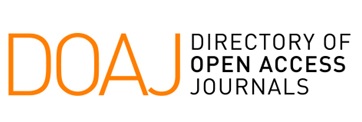AMERICAN VS BRITISH SPELLING PREFERENCES IN SPOKEN TOURISM ENGLISH BY EFL LEARNERS
Abstract
The issue of spelling variation between British English (BrE) and American English (AmE) in English- language tourism communication is often overlooked in English for Specific Purposes (ESP) instruction, particularly among learners of English as a Foreign Language (EFL). In reality, such variations can significantly influence how professionalism and message clarity are perceived in global communication contexts. This study aims to explore the spelling preferences used in spoken tourism English among two EFL learners, employing a qualitative case study approach. The research subjects were two fifth-semester students from Universitas Aisyah Pringsewu which were selected using purposive sampling. Data were gathered through transcripts of role-play simulations and reflective interviews, and analyzed using thematic coding and a linguistic observation rubric. The findings reveal that both participants predominantly used AmE spelling, influenced more by exposure to digital media than by systematic linguistic awareness. Nevertheless, BrE forms still emerged, particularly in contexts perceived as formal or institutional. These results highlight a limited metalinguistic awareness of spelling variation, which contributes to inconsistent register use in professional tourism communication. Therefore, it is recommended that English language instruction for tourism explicitly incorporate training on spelling variation and contextual usage to foster communicative competence that is both professional and adaptable in international settings.
Keywords
Full Text:
PDFReferences
Alshumaimeri, Y. (2022). The effects of content familiarity and language ability on reading comprehension performance of low- and high-ability Saudi tertiary students studying English as a foreign language. Education, Science & Islamic Study.
Basturkmen, H. (2010). Developing Courses in English for Specific Purposes. Palgrave Macmillan. https://doi.org/https://doi.org/10.1057/9780230290518
Basturkmen, H. (2025). ESP Teacher Development. In C. (Eds) Starfield, S. & Hafner (Ed.), The Handbook of English for Specific Purposes (Second Edi). Wiley-Blackwell. https://doi.org/https://doi.org/10.1002/9781119985068.ch12
Block, D. (2015). Social Class in Applied Linguistics. Annual Review of Applied Linguistics, 35, 1–19. https://doi.org/10.1017/S0267190514000221
Bolton, K. (2012). World Englishes and Asian Englishes: A survey of the field. In A. Kirkpatrick and R. Sussex (eds.) (Ed.), English as an International Language in Asia: 13 Implications for Language Education (pp. 13–26). Springer. https://doi.org/10.1007/978-94-007-4578-0_2
Bourdieu, P. (1991). Language and Symbolic Power. Polity Press.
Bouzidi, H. (2009). Between the ESP Classroom and the Workplace: Bridging the Gap. English Teaching Forum, 3.
Braun, V., & Clarke, V. (2006). Using thematic analysis in psychology. Qualitative Research in Psychology, 3(2), 77–101. https://doi.org/10.1191/1478088706qp063oa
Canagarajah, S. (2012). Translingual Practice: Global Englishes and Cosmopolitan Relations (1st Editio). Routledge. https://doi.org/https://doi.org/10.4324/9780203073889
Cortes, V., & Csomay, E. (2015). Corpus-based Research in Applied Linguistics: Studies in Honor of Doug Biber. John Benjamins Publishing Company. https://books.google.co.id/books?id=CKHroQEACAAJ
Creswell, J. W. (2012). Penelitian Pendidikan: Perencanaan, Pelaksanaan, dan Evaluasi Penelitian Kuantitatif dan Kualitatif (Edisi ke-4). Boston, MA: Pearson Education.
Csizér, K., & Kormos, J. (2009). Learning Experiences, Selves and Motivated Learning Behaviour : a Comparative Analysis of Structural Models for Hungarian Secondary and University Learners of English. In E. (Eds) Dörnyei, Z & Ushioda (Ed.), Motivation, Language Identity and the L2 Self (pp. 98–117). Multilingual Mattters.
Dornyei, Z. (2007). Research Methods in Applied Linguistics. Oxford University Press.
Dudley-Evans, T., & St John, M. (1998). Developments in ESP: A Multi-Disciplinary Approach. Cambridge University Press.
Eisenstein, J. (2013). What to do about bad language on the internet. Proceedings of NAACL-HLT, 359–369.
Elder, C. (2008). Language testing and english as an international language: Constraints and contributions. Australian Review of Applied Linguistics, 31, 34.1-34.11. https://doi.org/10.1075/aral.31.3.07eld
Ennis, M. J. (2021). What is ‘English for Tourism’? An Updated ‘GroundedReview’of the Literature. Iperstoria, 18, 194–228. https://www.unwto.org/impact-assessment-of-the-covid-19-outbreak-on-international-
Evans, N. G. (2024). Strategic Management for Tourism, Hospitality and Events (4th Editio). Routledge. https://doi.org/https://doi.org/10.4324/9781003318613
Evans, S. (2013). Designing tasks for the Business English classroom. ELT Journal, 67, 281–293. https://doi.org/10.1093/elt/cct013
Fang, F., & Baker, W. (2025). Global Englishes, translanguaging, and ESP. The Handbook of English for Specific Purposes: Second Edition, April, 525–541. https://doi.org/10.1002/9781119985068.ch27
Fitria, T. N. (2020). Teaching English for Specific Purposes (ESP) to the Students in English Language Teaching (ELT). Journal of English Teaching Adi Buana, 05(01), 55–66. https://doi.org/10.36456/jet.v5.n01.2020.2276
Gao, L. X., & Zhang, L. J. (2020). Teacher Learning in Difficult Times: Examining Foreign Language Teachers’ Cognitions About Online Teaching to Tide Over COVID-19. Frontiers in Psychology, 11, 1–14. https://doi.org/doi.org/10.3389/fpsyg.2020.549653
Gass, S. M., & Mackey, A. (2013). Stimulated Recall Methodology in Second Language Research (1st Editio). Routledge. https://doi.org/https://doi.org/10.4324/9781410606006
House, J. (2014). English as a Lingua Franca and Translation. The Interpreter and Translator Trainer, 7, 279–298. https://doi.org/10.1080/13556509.2013.10798855
Hyland, K. (2006). English for Academic Purposes: An Advanced Resource Book. Routledge. https://doi.org/https://doi.org/10.4324/9780203006603
Hynninen, N., & Solin, A. (2017). Language Norms in ELF. In J. Jenkins et al. (Eds.), The Routledge Handbook of English as a Lingua Franca. Routledge.
Jenkins, J. (2014). Global Englishes: A Resource Book for Students (3rd Editio). Routledge. https://doi.org/https://doi.org/10.4324/9781315761596
Kachru, B. B. (2005). Asian Englishes: Beyond the Canon. Hong Kong University Press.
Kalaja, P., & Barcelos, A. M. F. (2006). Beliefs about SLA. Springer.
Kankaanranta, A., & Louhiala-salminen, L. (2013). ”What Language Does Global Business Speak ?” – The Concept and Development of BELF. Iberica, 26(2013), 17–34.
Koceva, A. et al. (2023). British English Versus American English Preference By University Students of Efl. IJET: Teacher International Journal of Education, 26, 6–10. https://doi.org/http://doi.org/10.20544/teacher.26.01
Leung, C. (2013). The “social” in English Language Teaching: Abstracted norms versus situated enactments. Journal of English as a Lingua Franca, 2(2), 283–313. https://doi.org/10.1515/jelf-2013-0016
Li, M., & Pei, L. (2024). Exploring challenges in academic language-related skills of EFL learners in Chinese EMI settings. Acta Psychologica, 247, 104309. https://doi.org/https://doi.org/10.1016/j.actpsy.2024.104309
Liao, F.-H., & Hu, R.-J. S. (2016). Listening Comprehension Ability and Language Attitudes: American vs. British English. Sino-US English Teaching, 13(9), 671–680. https://doi.org/10.17265/1539-8072/2016.09.001
Long, M. H. (2005). Second Language Needs Analysis. Cambridge University Press. https://doi.org/https://doi.org/10.1017/CBO9780511667299
Long, M. H., & Crookes, G. (1992). Three Approaches to Task-Based Syllabus Design. TESOL Quarterly, 26(1), 27–56.
Louhiala-Salminen, L., & Kankaanranta, A. (2012). Language as an issue in international internal communication: English or local language? If English, what English? Public Relations Review, 38(2), 262–269. https://doi.org/https://doi.org/10.1016/j.pubrev.2011.12.021
Matsuda, A. (2012). Principles and practices of teaching English as an international language.
Melitz, J., & Toubal, F. (2014). Native language, spoken language, translation and trade. Journal of International Economics, 93(2), 351–363. https://doi.org/https://doi.org/10.1016/j.jinteco.2014.04.004
Muid, A. et al. (2024). Exploring Students’ Preferences of the Differences between British & American English. Globish: An English-Indonesian Journal for English, Education, and Culture, 13(2), 210. https://doi.org/10.31000/globish.v13i2.11641
Nickerson, C. (2005). English as a lingua franca in international business contexts. English for Specific Purposes, 24, 367–380. https://doi.org/10.1016/j.esp.2005.02.001
Nielsen, E. et al. (2023). Spelling convention sensitivity in neural language models. https://doi.org/10.48550/arXiv.2303.03457
Paltridge, B., & Phakiti, A. (2015). Research Methods in Applied Linguistics: A Practical Resource.
Pratiwi, W. R. et al. (2023). Societal’s Attitude Towards the Essential of English for the Tourism Sector: Expectations and Actions. ENGLISH FRANCA : Academic Journal of English Language and Education, 7(2), 393. https://doi.org/10.29240/ef.v7i2.8335
Ranta, E. (2010). English in the real world vs. English at school: Finnish English teachers’ and students’ views. International Journal of Applied Linguistics. https://doi.org/https://doi.org/10.1111/j.1473-4192.2009.00235.x
Richards, J. C., & Schmidt, R. (2013). Longman Dictionary of Language Teaching and Applied Linguistics (4th Editio). Routledge.
Rose, H., & Galloway, N. (2019). Global Englishes for Language Teaching. In Global Englishes for Language Teaching (Issue 2017). Cambridge University Press. https://doi.org/10.1017/9781316678343
Seidlhofer, B. (2011). Understanding English as a Lingua Franca. Oxford University Press. https://doi.org/10.1111/j.1473-4192.2011.00305.x
Sung, C. C. M. (2016). Exposure to Multiple Accents of English in the English Language Teaching Classroom: From Second Language Learners’ Perspectives. Innovation in Language Learning and Teaching, 10, 90–205. https://doi.org/https://doi.org/10.1080/17501229.2014.936869
Taguchi, N., & Kim, Y. (2016). Collaborative Dialogue in Learning Pragmatics: Pragmatic-Related Episodes as an Opportunity for Learning Request-Making. Applied Linguistics, 37(3), 416–437. https://doi.org/10.1093/applin/amu039
Trudgill, P., & Hannah, J. (2017). International English: A Guide to Varieties of English Around the World (6th Editio). Routledge. https://doi.org/https://doi.org/10.4324/9781315192932
Wang, S., & Vasquez, C. (2012). Web 2.0 and Second Language Learning: What Does t he Research Tell Us? CALICO Journal, 29, 412–430. https://doi.org/10.11139/cj.29.3.412-430
Woodrow, C., & Guest, D. E. (2017). Knowledge acquisition and effective socialization: The role of the psychological contract. Journal of Occupational and Organizational Psychology, 90(4), 587–595. https://doi.org/https://doi.org/10.1111/joop.12178
Yang, W. et al. (2022). Mental Representations of Time in English Monolinguals, Mandarin Monolinguals, and Mandarin-English Bilinguals. Frontiers in Psychology, 13, 791197. https://doi.org/10.3389/fpsyg.2022.791197
Yin, R. K. (2014). Case study research design and methods (5th Editio). CA: Sage. https://doi.org/10.3138/CJPE.BR-240
Yoestara, M., & Wahyuni, J. (2022). University Students’ Preferences and Recognition: British English Vs. American English. International Journal of Education, Language, and Religion, 4(1), 47. https://doi.org/10.35308/ijelr.v4i1.5561
Zampieri, M. et al. (2022). Predicting the type and target of offensive social media posts in Marathi. Social Network Analysis and Mining, 12(1), 1415–1420. https://doi.org/10.1007/s13278-022-00906-8
DOI: https://doi.org/10.32502/ecj.v9i2.10260
Refbacks
- There are currently no refbacks.
Copyright (c) 2025 English Community Journal
The Departement of English Education, Faculty of Teacher Training and Education, Universitas Muhammadiyah Palembang
Jl. Jenderal A. Yani 13 Ulu, Seberang Ulu II, Palembang (30263), Indonesia.
Indexed by :
English Community Journal has been listed in :

English Community Journal by http://jurnal.um-palembang.ac.id/index.php/englishcommunity is licensed under a Creative Commons Attribution-ShareAlike 4.0 International License.








